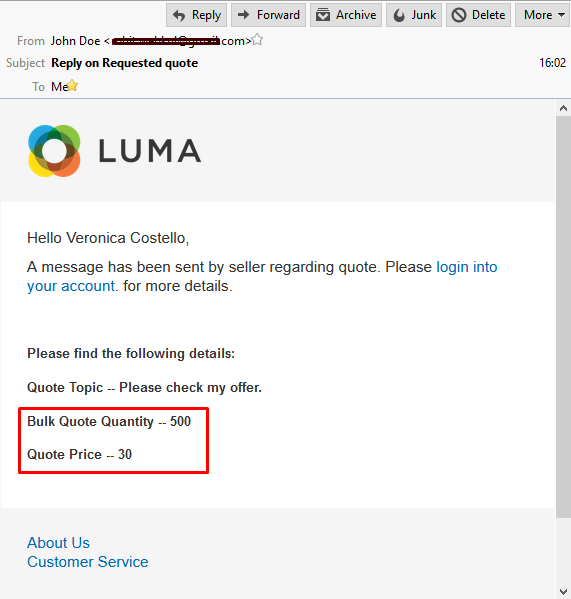Analysis of the Insurable Risk Characteristics of Healthcare ProQuest

This approach only makes sense as insurers have to protect their assets, too. By limiting the number of covered losses they’ll pay, an insurer can better control the outcome of harmful situations. Risks are often referred to as covered risks, meaning the chances of the
named perils are covered.
Regardless of the industry, companies can’t transfer each one of their risks to an insurer. What’s more, insurance companies can’t cover every last risk on the plant. Sometimes the exposure is too costly, easy to manipulate, or impossible to value. Making a few reasonable assumptions is sometimes providing sufficient accuracy.
Pure risks ideally should have certain characteristics to be insurable by private insurers. List…
To be insurable, a risk must involve the chance of loss that is unexpected and outside the insured’s control. Loss must be the result of an unintentional act or one that occurred by chance in order to be insurable. In essence, it must be beyond the control or influence of the business. Losses also need to be random, meaning that the potential for adverse selection does not exist. In reality, however, this is impossible because catastrophic losses periodically result from floods, hurricanes, tornadoes, earthquakes, forest fires, and other natural disasters.
- Founder Shield specializes in knowing the risks your industry faces to make sure you have adequate protection.
- If the extent of the loss cannot be calculated or cannot be fully identified, then it is not insured.
- Keep in mind that many risks are insurable — but they must meet specific criteria.
- The losses are fairly predictable and can be measured in money terms—loss of peace of mind, tension, etc.
The same goes for someone filing an employment practices claim or a US Securities and Exchange Commission (SEC) lawsuit. Pure risks have no chance of a constructive outcome — it’s all or nothing. However, in a separate scenario, the startup could suffer losses from customers leaving because they were unhappy with the service.
Not Catastrophic
Therefore, the level of what each insurer believes is catastrophic will differ. In short, a catastrophic risk for an insurance company is any type of loss that is so pervasive, expensive, or unpredictable that it would not be reasonable to offer coverage for it. Pure risks are risks that have no possibility of a positive outcome—something bad will happen or nothing at all will occur.
Using loss frequency curves based on non-exceedance probabilities compared to exceedance probabilities (Fig. 2.4) makes communication with stakeholders easier. If only a limited number of values are available for consequences and their probabilities, the ranges in-between these values have to be estimated. The lowest expected annual loss would result from consequences staying constant until the next value of non-exceedance probability is reached. The highest expected annual loss results from consequences jumping to the next level right beyond each value of non-exceedance probabilities (see Fig. 2.8). If the final decision is not impacted by this range of possibilities, no further investigation is needed.
In addition, other types of business risks are deemed uninsurable based on the potential that a loss will occur outweighing the potential that it won’t. For example, deterioration of property caused by wear and tear (because a decision was made to not maintain the property in question) or income loss due to market changes are typically not insurable. Risk of loss here may be avoided, or at least mitigated, with proper “controls” in place. That said, the risks that a business can transfer to an insurance company or more appropriately, chooses to transfer, are generally those that could result in significant loss to the business. Now, let’s take a closer look at how those risks are considered and classified. The adverse event may or may not occur in the future and once the insurance company has no control.
The Wall Street Journal article, “Hit With Big Losses, Insurers Put Squeeze on Homeowner Policies,” reported massive exclusions of mold coverage because of the “avalanche of claims.”Jeff D. Opdyke and Christopher Oster, “Hit With Big Losses, Insurers Put Squeeze on Homeowner Policies,” Wall Street Journal, May 14, 2002. A policyholder characteristics of insurable risk may choose to pay a higher premium for insurance with higher payout limits and/or lower deductibles. They may also elect to pay lower premiums for a policy that provides lower benefits in the event of a claim. Many times, these breaking stories provide a sneak peek into the insurance industry and insight into your own risks.

Speculative risk has a chance of loss, profit, or a possibility that nothing happens. Gambling and investments are the most typical examples of speculative risk. The traditional insurance market does not consider speculative risks to be insurable. The probability of first damages can have an impact on the (accepted) risk. Furthermore, the dealing with risks can be different for hazards with frequent damages compared to hazards with rare damages. Storms (frequent) and earthquakes (rare) are hazards with such a difference in probability of first loss (Fig. 2.5).
Current estimates of return periods are usually based on past and current probabilities. Applying these probabilities to longer time periods might give the impression that they will stay constant in the future. Especially for hazards driven by meteorological events, probabilities are assumed to change with climate change. Naturally, each insurer determines the insurability of an exposure. Before you purchase an insurance plan, you must know your policies well and understand gaps or holes in coverage. Most insurance providers only cover pure risks, or those risks that embody most or all of the main elements of insurable risk.
Insurability
Investors can even purchase risk-linked securities, called “cat bonds,” which raise money for catastrophic risk transfers. The second kind of catastrophic risk involves any unpredictably large loss of value not anticipated by either the insurer or the policyholder. Perhaps the most infamous example of this kind of catastrophic event occurred during the terrorist attacks on Sept. 11, 2001. For an insurance company, catastrophic risk is simply any severe loss deemed too expensive, pervasive, or unpredictable for the insurance company to reasonably cover. Probability of different return period events over different lifetimes or time periods.
Insurance Risk Class Definition and Associated Premium Costs – Investopedia
Insurance Risk Class Definition and Associated Premium Costs.
Posted: Sun, 26 Mar 2017 06:03:56 GMT [source]
Usually, an insurer will counterbalance their own risk (of insuring you) with premiums, exclusions, and predetermined dollar limits. Consider mid-market companies, as well, where cybersecurity remains one of the primary risks. Sadly, these businesses are often pegged as “low-hanging fruit” for cybercriminals. As a result, insurers have mounds of statistical knowledge to base their loss estimates, making cyber insurance increasingly popular.
What Makes a Risk Insurable?
This means the loss should be definite as to cause, time, place, and amount. Insurability is sometimes an issue in case law of torts and contracts. It also comes up in issues involving tontines and insurance fraud schemes. In real property law and real estate, insurability of title means the realty is marketable.
In review: the legal framework for insurance disputes in Spain – Lexology
In review: the legal framework for insurance disputes in Spain.
Posted: Tue, 29 Nov 2022 08:00:00 GMT [source]
For example, if an insurer is insuring a house, the insurer must
know the owner’s assets to assess the home’s economic value. In business, risk management is the organizational process of identifying, assessing, and mitigating potential hazards to the personal safety of employees, vendors, and customers. Learn the differences between insurable and uninsurable risk, how to identify both types of risk, and ways to assess and manage risk in the workplace. A second related rule is that the number of exposure units, or policyholders, must also be large enough to encompass a statistically random sample of the overall population.
Characteristics of insurable risks
For example, the contract may cover loss by fire at a specified location. For this contract to be effective, it must be possible to determine when, where, and how much loss occurred. If this cannot be established, it is impossible to determine whether the loss is covered under the terms of the contract. The fact that pain and suffering is hard to measure in dollar terms increases the insurer’s risk when calculating rates for liability insurance. One other reason the requirement of definiteness is essential is that it is necessary to accumulate data for future predictions. Unless such data can be accurate, they cannot provide the basis for useful predictions.

If there is another emergency service in the vicinity, it is acceptable that the access road is being flooded as long as the interruption of the access is of short duration. If the emergency service is the only one in a larger region, a flooded access road is not acceptable. The loss exposures to be insured and those observed for calculating the probability distributions must have similarities.
What is insurance peril?
A moral hazard results from the decision to do something wrong or act less
carefully in light of knowing that the insurance will cover the loss. Have you ever considered faking your accident to collect on an insurance
claim?. It is unethical to
create a loss (either by design or by lack of care for the situation)
to profit from an insurance claim.
He walks into your insurance
office in a shiny new Gucci suit with a Pave Diamond Dial Rolex watch
strapped onto his wrist. Joe seeks a homeowner’s policy and life insurance
for his new house since he plans to pursue hobbies that make him susceptible
to heart attacks. The life and health insurance on Joe’s place and
aren’t considered pure risks.

The physical hazards include slippery
surfaces, icy conditions, faulty building construction, and other similar risks. Exposure means a condition
that may expose you to risk or liability. For example, on a new part-time
job, Joe cleans windows on skyscrapers. He is exposing himself to the
chance of falling from great heights.
